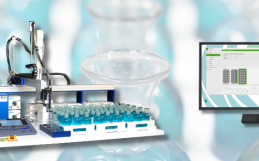MANTECH’s PeCOD® Analyzer utilizes a UV-activated nanoparticle TiO2 (titanium dioxide) to produce hydroxyl radicals for an advanced oxidation process (AOP). This patented technology rapidly oxidizes all organics without the need to digest hazardous chemicals (dichromate, mercury, etc.,) for over 2 hours.

These methods use TiO2-mediated photoelectrocatalysis (PEC) to oxidize organic contaminants. This paper reviews the recent synthesis methods of TiO2 nanomaterials with respect to electrode preparation in COD sensors, fundamentals of TiO2 photo/photo-electro-catalysis, TiO2 based PeCOD sensors, and PeCOD sensor system cell design. PEC combines photocatalysis with electrochemical methods, which result in improved photocatalytic performance in a variety of applications. TiO2 based PeCOD sensors are promising due to their intrinsic low cost, non-toxicity, chemical stability, and availability in sensing applications. Here in this paper, an innovative PeCOD sensor system cell design system is demonstrated. This review paper aims to provide a scientific and technical overview of TiO2 PeCOD sensor systems implementable for large-scale environmental, soil, and gas sensing applications.
Bastug Azer, B., Gulsaran, A., Pennings, J. R., Saritas, R., Kocer, S., Bennett, J. L., Devdas Abhang, Y., Pope, M. A., Abdel-Rahman, E., & Yavuz, M. (2022). A review: Tio2 based photoelectrocatalytic chemical oxygen demand sensors and their usage in industrial applications. Journal of Electroanalytical Chemistry, 918, 116466. https://doi.org/10.1016/j.jelechem.2022.116466






